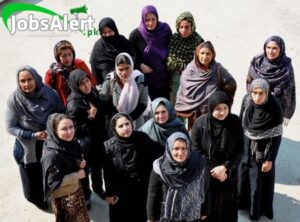Walled City Lahore, ancient gates, bazaar streets, and ancient architecture are a living testimony of ancient past of the subcontinent. Ancient neighborhood in more senses than ancient architecture, this neighborhood has experienced rise and fall of empires, blooming of arts and crafts, and blend of diverse traditions.
Throughout the decades, however, the Walled City was faced with neglect, congestion, pollution, and haphazard urban development. Its buildings crumbled, and valuable murals and woodworks deteriorated under the forces of time and nature.
To take up these challenges, the Walled City of Lahore Authority (WCLA) was set up in 2012 as a specialized institution devoted to preserving, restoring, and projecting Lahore’s historic centre. Its task is to protect Lahore’s cultural heritage while keeping it alive and relevant in an ever-developing city.
Historical Significance of the Walled City
Originally constructed during the Ghaznavid period and then enriched by subsequent rulers, the Walled City was in its prime under the Mughal dynasty. Encircled by a fortified wall and 13 imposing gates, the city was the center of Punjab’s politics, culture, and commerce.
These monuments such as Lahore Fort, Shahi Hammam, Wazir Khan Mosque, and Royal Trail reflect the brilliance of the Mughal era in architecture. Intricate frescoes, tiles, and calligraphy testify to creative genius and skill and have left historians awestruck across the ages.
In the times of Sikh and British rule, the Walled City had continued to hold significance as a cultural and commercial center. Even nowadays, with the onset of modernization, the area remains a busy neighborhood of bazaars, shrines, and ancient food streets.
- Walled City of Lahore Authority
Preservation and Restoration Work
WCLA has been involved in undertaking various projects to preserve historic sites while still keeping them original.
Shahi Hammam
This historic Mughal bathhouse, which was once the centerpiece of social life, had been lying vacant. Dirt and smoke masked its delicate frescoes. It has been restored laboriously with assistance from the Aga Khan Trust for Culture into a cultural museum of heritage depicting the culture of Mughal leisure life.
Wazir Khan Mosque
Famous for the exquisite faience tile work and Quranic calligraphy, Wazir Khan Mosque had faced environmental and structural deterioration. The WCLA preserved the mosque facade, stabilizing mosque foundations as well, and restored the attractive mosque mosaics and regained the brilliant beauty of the mosque to life.
Royal Trail
The “Royal Trail” project brought back life into the ancient passage from Delhi Gate to the Lahore Fort. The way-side buildings were restored, signage was improved, and open spaces were beautified. It has now become a staple of heritage walks and welcomes domestic and foreign tourists equally.
Cultural Tourism as an Engine of Growth
Heritage Walks and Guided Tours
Structured tours allow visitors to explore restored streets and monuments with expert guides sharing historical anecdotes and local legends. These tours provide employment for local youth as guides, hospitality workers, and vendors.
Cultural Events and Festivals
Seasonal celebrations like Basant, Sufi nights of music, and traditional food festivals restore the celebratory mood of Lahore. These festivals celebrate culture and provide artisans and performers an opportunity to showcase their crafts.
Boost to Local Businesses
Inflow of visitors helps the street food vendors, artisans, and shopkeepers. The connection of economic development and heritage management provides community support to the WCLA’s efforts.
Participation in Society and Skill Development
Knowing that restoring heritage is impossible without community support, the WCLA runs training courses in ancient crafts such as carpentry, stoneworking, and tile-laying. These conserve ancient skills and provide economic motivators.
Awareness programmes make the residents conserve and cherish the places they inhabit. Involving the community helps WCLA develop an ownership mindset which sustains the effort of conserving.
Collaborations and Global Accolades
The WCLA’s efforts have been acknowledged worldwide. Collaborations with UNESCO, the Aga Khan Trust for Culture, and foreign missions have attracted technical assistance and grants for ambitious restoration projects.
Some of the Lahore Fort and Shalamar Gardens locations were removed from UNESCO’s list of protected heritage sites in 2018, and this illustrates the success of efforts by the Authority. These achievements have turned Lahore into a South Asian city exemplar of urban heritage management.
Challenges in Heritage Preservation
-
Urban Encroachment: Unplanned development threatens historic authenticity.
-
Pollution: Road traffic-generated air pollution and vibrations damage delicate architecture.
-
Financing Constraints: Long-term projects require sustained financing to ensure completion.
-
Balancing Tourism and Conservation: Heavy traffic due to tourism could stress sensitive sites.
WCLA needs to keep devising new means of safeguarding heritage even as it provides for contemporary needs.
Future of the Walled City
In the future, the WCLA hopes to extend restoration to lesser-known sites, enhance the infrastructure, and launch digital heritage experiences like augmented reality tours. Restoration of further gates, upgrading night-time lighting, and the creation of new cultural spaces for exhibitions and performance are among plans under way. Digitization of records and geo-tagging of heritage sites are also being conducted to assist scholars and inform plans of conservation. Combining state-of-the-art technology and ancient traditions of preservation, the Walled City will thrive in the 21st century.
A National Symbol of Pride
The revival of the Walled City is more than a local project—it is a symbol of Pakistan’s dedication to preserving its cultural roots. Every restored building, every heritage walk, and every revived festival strengthens the connection between people and their history.
By vision, effort, and collective work of the community, the WCLA has demonstrated that the heritage need not be frozen into a museum but could be maintained as a living, breathing element of the Walled City of Lahore—where the scent of traditional cooking lingers in the air, the summons to prayer rings from rebuilt mosques, and the past resides in every brick.
By protecting the past, Lahore Walled City Authority is building a future where heritage does not get forgotten, but gets celebrated as the foundation of identity and pride.

